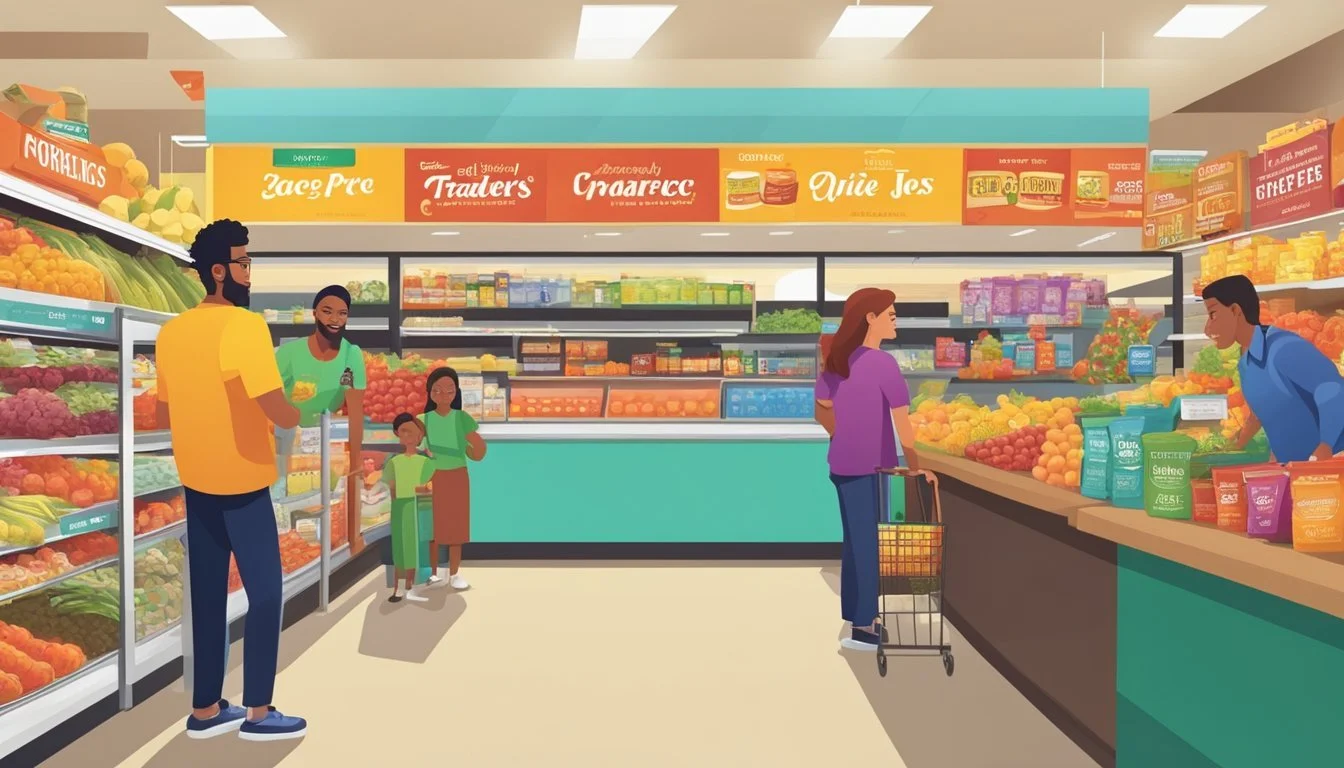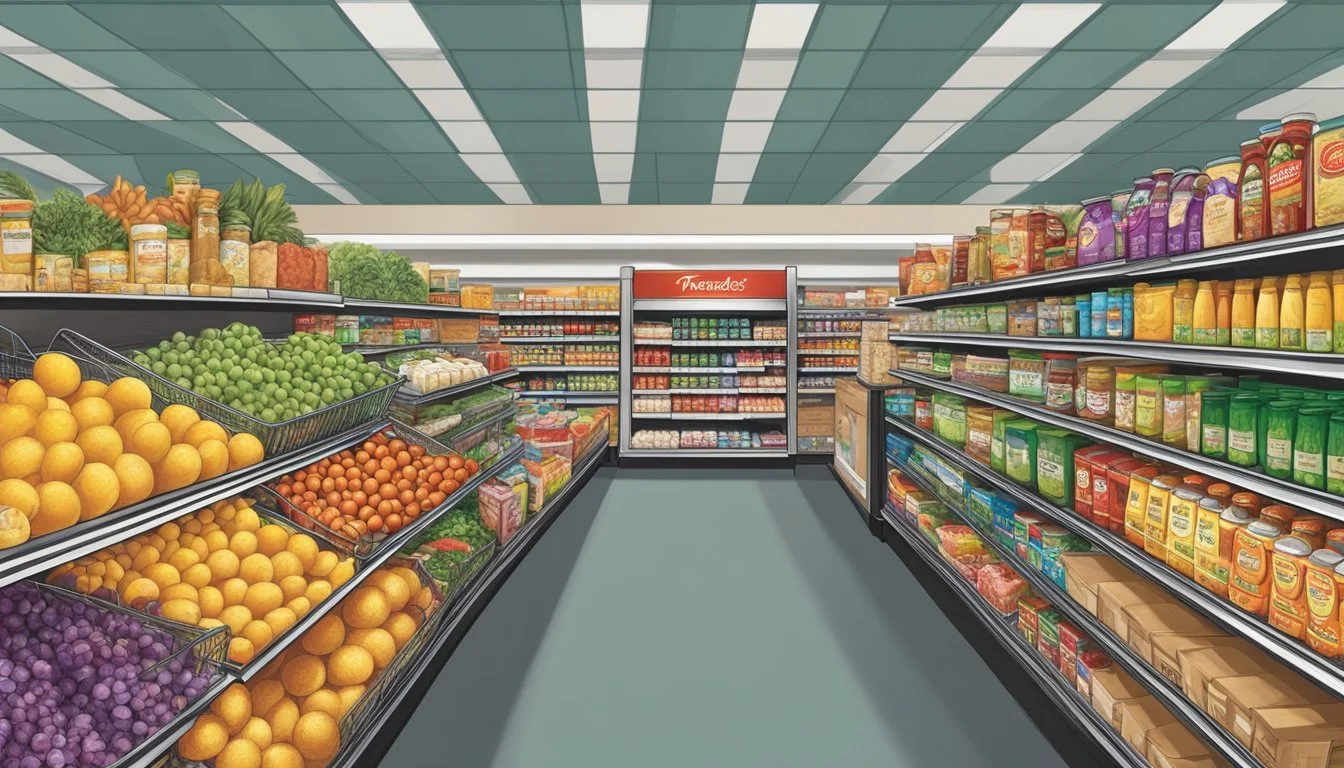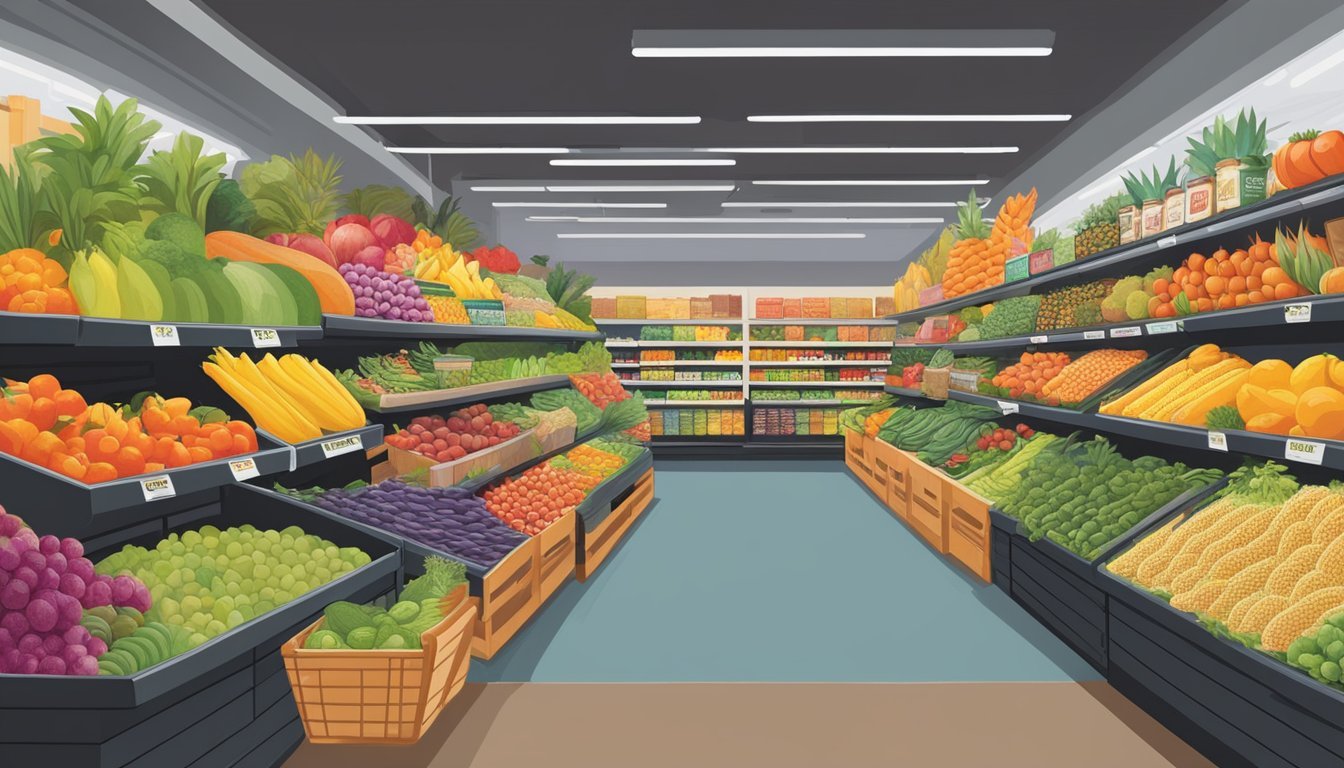Grocery Outlet vs Trader Joe's
A Comprehensive Price and Quality Comparison
Grocery Outlet and Trader Joe's are two popular grocery chains known for offering unique shopping experiences and budget-friendly options. Both stores have cultivated loyal customer bases by providing distinctive product selections and competitive pricing.
While Trader Joe's excels in offering high-quality private label products and a curated shopping experience, Grocery Outlet specializes in deep discounts on brand-name items through opportunistic buying. This fundamental difference in business models sets the stage for a comparison between these two supermarket alternatives.
Shoppers seeking affordable groceries may find themselves torn between the quirky charm of Trader Joe's and the treasure hunt atmosphere of Grocery Outlet. Each store has its strengths, from Trader Joe's focus on organic and gourmet items to Grocery Outlet's ever-changing inventory of discounted products. Understanding the unique attributes of these grocery stores can help consumers make informed decisions about where to shop for their household needs.
History and Business Models
Grocery Outlet and Trader Joe's both emerged from the San Francisco Bay Area with unique approaches to grocery retail. Their distinct origins and business strategies have shaped their growth into popular chains with loyal customer bases.
Origins of Grocery Outlet and Trader Joe's
Grocery Outlet traces its roots to 1946 when Jim Read opened Cannery Sales in San Francisco. The store initially sold military surplus items at low prices before evolving into a discount grocery business. In 1987, the company adopted its current name, Grocery Outlet.
Trader Joe's began in 1958 as Pronto Markets, founded by Joe Coulombe in Pasadena, California. Coulombe transformed the concept in 1967, renaming it Trader Joe's and focusing on unique, high-quality products at affordable prices.
Business Model Comparison
Grocery Outlet operates on an "opportunistic buying" model. They purchase excess inventory, discontinued items, and closeouts from manufacturers at steep discounts. This allows them to offer brand-name products at 40-70% below conventional retail prices.
Trader Joe's takes a different approach. They emphasize private-label products, with about 80% of their inventory under the Trader Joe's brand. This strategy enables them to maintain quality control and offer unique items at competitive prices.
Both chains prioritize a no-frills shopping experience. Grocery Outlet stores are often described as "treasure hunts" due to their constantly changing inventory. Trader Joe's maintains a curated selection, typically offering fewer than 4,000 items compared to 50,000 in traditional supermarkets.
Product Assortment and Quality
Trader Joe's and Grocery Outlet offer distinct product selections and quality levels. Both stores have unique approaches to store brands, produce freshness, and specialty item availability.
Store Brands and Exclusive Products
Trader Joe's is renowned for its extensive private label offerings. Over 80% of Trader Joe's products are store brand items, often sourced from well-known manufacturers. These exclusive products range from snacks and frozen meals to beverages and personal care items. Many have cult followings among shoppers.
Grocery Outlet takes a different approach. While they do offer some private label goods, their focus is on selling brand-name products at discounted prices. Shoppers can find familiar national brands alongside lesser-known labels. The selection changes frequently based on available deals.
Freshness and Quality of Produce
Trader Joe's produce section is compact but well-curated. They emphasize quality over quantity, offering a selection of fresh fruits and vegetables. Pre-packaged produce is common, which can be convenient but may limit selection flexibility.
Grocery Outlet's produce quality can vary. As a discount store, they often sell surplus inventory from other retailers. This can result in great deals on fresh items, but consistency may be an issue. Shoppers should check expiration dates carefully.
Organic and Specialty Item Selection
Trader Joe's offers a wide array of organic products across categories. Their selection includes organic produce, dairy, meats, and packaged goods. They also cater to special diets with gluten-free, vegan, and vegetarian options.
Grocery Outlet's organic and specialty selection is more limited. They do offer some organic products, often at significant discounts. However, the availability of these items can be inconsistent. Gluten-free and vegan options are present but not as prominent as at Trader Joe's.
Price Analysis and Cost Savings
Grocery Outlet and Trader Joe's both attract budget-conscious shoppers with their competitive pricing strategies. Each store employs distinct approaches to offer value, from everyday low prices to unique discount models.
Comparing Everyday Low Prices
Trader Joe's consistently offers lower prices on many staple items compared to traditional grocery chains. A recent comparison of 48 basic grocery items showed Trader Joe's totaling $150.32, while a typical grocery store came in significantly higher. Trader Joe's achieves these savings through a focus on private label products and efficient operations.
Grocery Outlet takes a different approach, offering brand-name products at deeply discounted prices. Their inventory consists of surplus stock, discontinued items, and packaging changes. This model allows them to sell items for 40-70% below conventional retail prices.
Discounts and Coupons Strategy
Trader Joe's maintains a no-frills pricing model, eschewing sales, coupons, or loyalty programs. Their prices remain consistent, simplifying the shopping experience for customers.
Grocery Outlet, in contrast, embraces a treasure hunt atmosphere. They offer additional savings through weekly specials and in-store coupons. These deals change frequently based on available inventory.
Grocery Outlet's bargain-oriented approach appeals to shoppers willing to be flexible with brands and products. Trader Joe's attracts those who prefer predictable pricing on a curated selection of items.
Shopping Experience and Store Layout
Grocery Outlet and Trader Joe's offer distinct shopping atmospheres and layouts. Each store's design impacts customer navigation, product discovery, and overall experience.
In-Store Navigation and Atmosphere
Grocery Outlet typically features wider aisles and a more spacious layout. Products are often arranged in a traditional supermarket style, with clearly marked sections for produce, dairy, and dry goods. The store's atmosphere tends to be brighter and more utilitarian.
Trader Joe's stores are generally smaller, averaging around 15,000 square feet. They utilize a more compact layout with narrower aisles. The store design encourages exploration, with quirky product displays and hand-written signs adding character. Trader Joe's arranges items strategically, placing staples like milk at the back to guide customers through the store.
Customer Experience and Services
Grocery Outlet focuses on providing a straightforward shopping experience. Customers can expect to find discounted brand-name products and a rotating inventory. The store may offer fewer frills but emphasizes value for budget-conscious shoppers.
Trader Joe's is known for its attentive customer service and friendly staff. Employees wear Hawaiian shirts, creating a casual, approachable atmosphere. The store offers free samples and a liberal return policy. Trader Joe's limited selection of curated products simplifies decision-making for customers. This approach has helped build a dedicated following among shoppers who appreciate the store's unique offerings and personalized touch.
Consumer Perceptions and Brand Loyalty
Trader Joe's and Grocery Outlet have cultivated distinct brand identities that resonate with their respective customer bases. These unique approaches influence consumer perceptions and foster loyalty among shoppers.
Cult Following and Brand Image
Trader Joe's has developed a strong cult following over the years. The company's quirky marketing, friendly staff in Hawaiian shirts, and focus on unique private-label products have created a devoted customer base. Trader Joe's brand image revolves around affordability, quality, and a fun shopping experience.
Grocery Outlet, while less known nationally, has built a reputation for offering significant discounts on name-brand products. Their "treasure hunt" shopping model, where inventory changes frequently, appeals to bargain-hunters and adventurous shoppers.
Both stores have carved out distinct niches in the grocery market, attracting different consumer segments based on their brand positioning and offerings.
Customer Satisfaction and Feedback
Trader Joe's consistently ranks high in customer satisfaction surveys. The company's emphasis on customer service, product quality, and store atmosphere contributes to positive feedback. Shoppers appreciate the curated selection of products and the store's commitment to introducing new and innovative items.
Grocery Outlet receives praise for its low prices and ever-changing inventory. Customers enjoy the thrill of finding unexpected deals on familiar brands. However, the inconsistent product availability can be a drawback for some shoppers seeking specific items.
Both stores have loyal customer bases, but for different reasons. Trader Joe's loyalty stems from its unique products and shopping experience, while Grocery Outlet's stems from its deep discounts and bargain-hunting opportunities.
Geographical Availability and Expansion
Grocery Outlet and Trader Joe's have distinct geographical footprints and expansion strategies. Their current market presence and future growth plans differ significantly, shaping their accessibility to consumers across the United States.
Current Footprint and Market Presence
Grocery Outlet operates over 400 stores across seven states, primarily in the western United States. California hosts the majority of its locations, with a strong presence in the San Francisco Bay Area. The company also has stores in Oregon, Washington, Idaho, Nevada, Pennsylvania, and New Jersey.
Trader Joe's boasts a larger network of approximately 530 stores spread across 42 states and Washington D.C. It maintains a strong presence on both coasts, with California being its largest market. Trader Joe's has successfully penetrated urban and suburban areas nationwide.
Future Growth and Expansion Plans
Grocery Outlet aims to expand its footprint aggressively. The company plans to open 25-28 new stores annually, focusing on existing markets and nearby states. It sees potential for up to 4,800 locations across the United States.
Trader Joe's takes a more measured approach to expansion. The company typically adds 20-30 new stores each year. It prioritizes careful site selection and maintaining its unique culture. Trader Joe's expansion strategy targets both new and existing markets, with a focus on urban and high-density suburban areas.
Both retailers face challenges in their growth plans, including site availability and maintaining their distinct store experiences. Grocery Outlet's expansion may lead to increased competition with Trader Joe's in certain markets.
Conclusion: Weighing the Pros and Cons
Grocery Outlet and Trader Joe's both offer unique shopping experiences with distinct advantages. Grocery Outlet excels in providing significant discounts on brand-name products, making it an excellent choice for budget-conscious shoppers.
Trader Joe's stands out with its curated selection of private-label items and emphasis on organic and natural foods. The store's smaller product range of around 4,000 items allows for a more focused shopping experience.
Value-seekers may find Grocery Outlet more appealing due to its rotating inventory of deeply discounted items. However, Trader Joe's offers consistent pricing on its store-brand products, which many customers appreciate.
In terms of store atmosphere, Trader Joe's typically provides a more polished and themed environment. Grocery Outlet stores can vary in layout and appearance, focusing more on the bargain-hunting aspect.
Product quality is generally high at both retailers, though Trader Joe's may have an edge in organic and specialty items. Grocery Outlet's inventory can be less predictable but often includes premium brands at lower prices.
The choice between these stores ultimately depends on individual preferences and priorities. Those seeking the lowest prices on a wide range of products may prefer Grocery Outlet, while shoppers valuing a curated selection of unique items may lean towards Trader Joe's.








